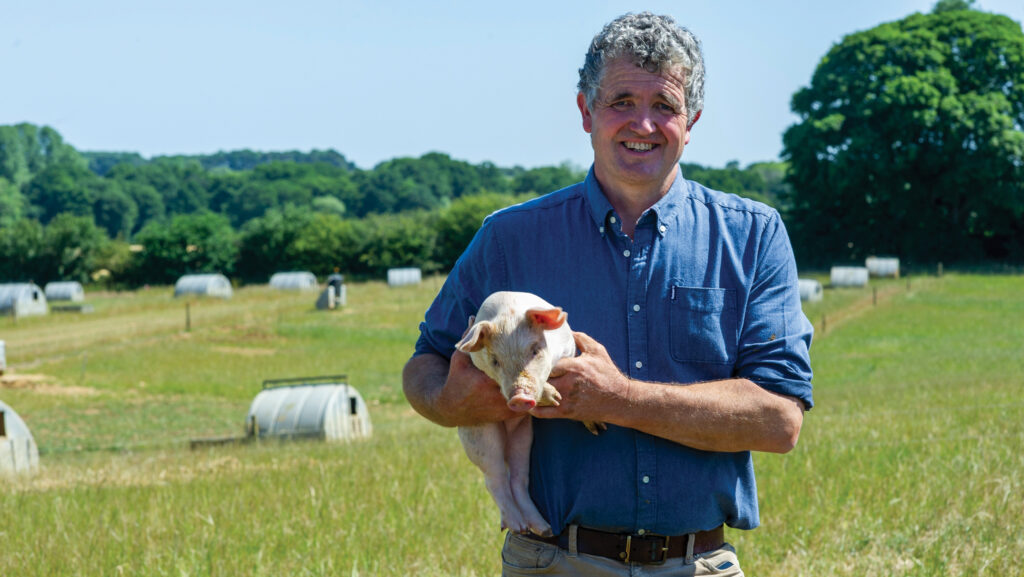Farmer Focus: Will flexible ad-lib feeders boost sow performance?
 Rob McGregor © Jason Bye
Rob McGregor © Jason Bye Pigs are notorious for having very good appetites, so it’s no wonder our breeding herd systems have evolved using well-controlled feeding regimes.
Usually, these rely on one or, in some rare cases, two feeds a day.
For most of the time, that works perfectly well, but sometimes we would like our adult females to eat more, and be able to take a bit of time doing so.
See also: 7 tips on maintaining sow body condition
One example is during lactation, when the weight of daily feed given can rise from a base level of 2.75kg to as high as 12kg.
Getting sows to eat and digest that amount of food in a relatively short time has led to some farms feeding twice a day, while others, like us, have taken to using small, individual-space farrow feeders.
These provide a basic level of weather protection to the feed, and prevent birds swooping in and stealing it.
It’s quite common to see food still in the feeders after lunchtime – probably five hours after they have been fed – but this could still mean the sow will have no food available for more than half the day.
Some people have started using a new type of feeder in their individual farrowing paddocks: each has its own hopper that holds around 70kg of feed.
The stockperson can manually release pellets into an integral trough in the days pre- and post-farrowing, stepping up the quantity until the sow is eating 7kg/day.
Then, with a simple shutter mechanism, it becomes an ad-lib feeder, allowing the sow to eat as frequently as she likes.
I have several of these units on trial, including some that are a bolt-on conversion to my existing 500 conventional feeders.
Being able to piggyback this new development onto what I already have is a financial advantage.
Where these new feeders are being widely used, farms can now carry out most of their daily routine using smaller, lighter vehicles.
Larger machinery is only traveling over the land twice a week to refill.
Feed consumption is increased, and piglet weaning weight and sow body condition are significantly better.
Evidence is also showing that the drop in performance often experienced at second litter is not being seen, which could be a real game changer for overall herd performance.

